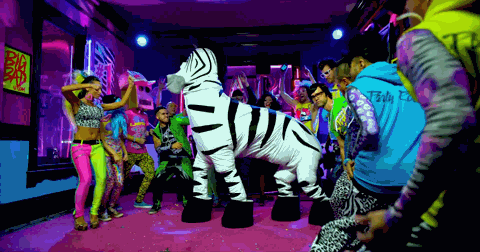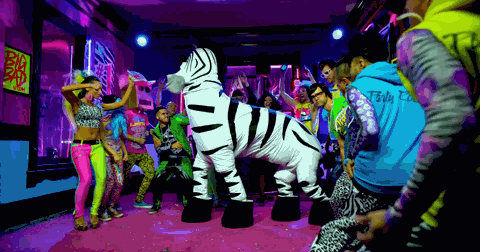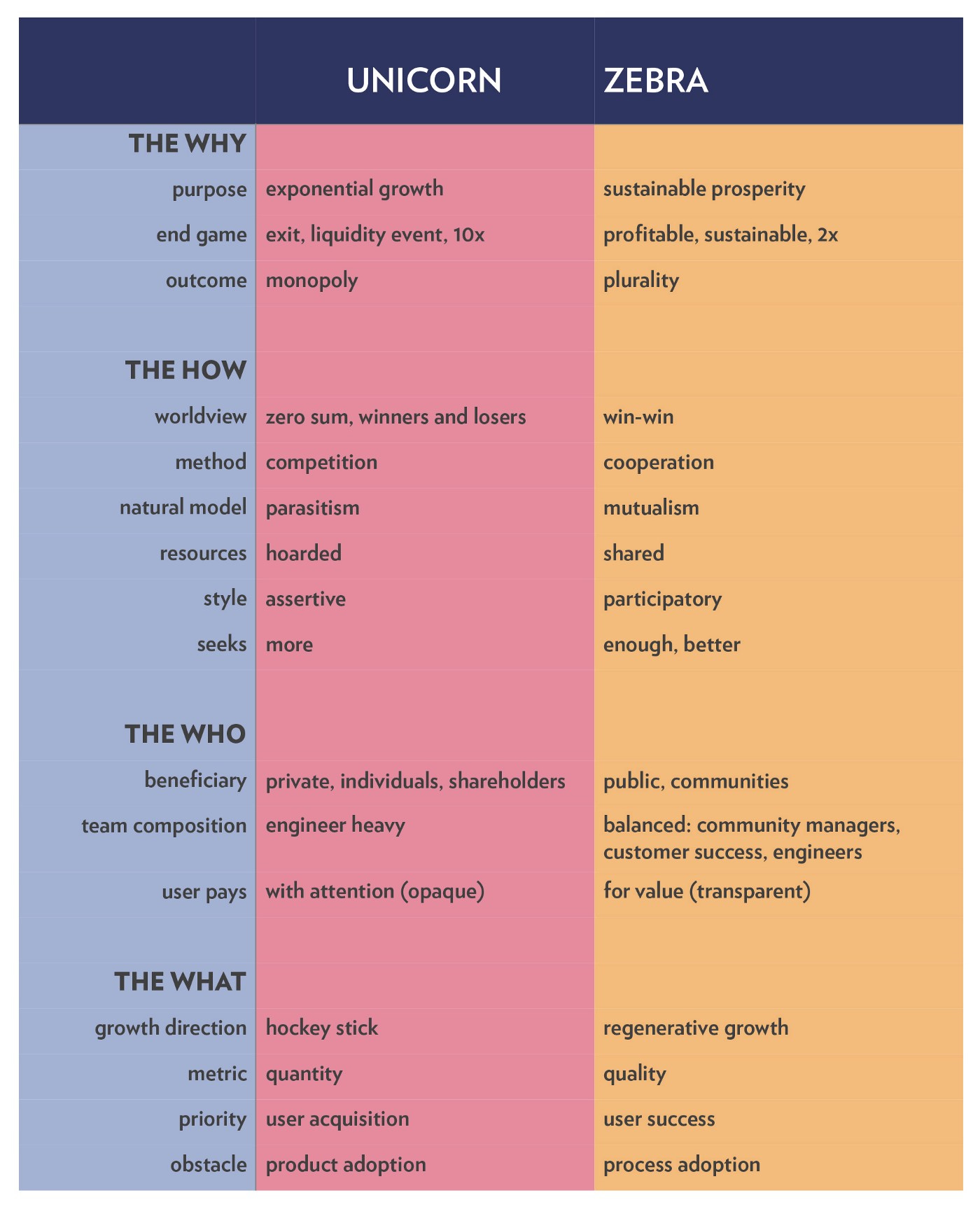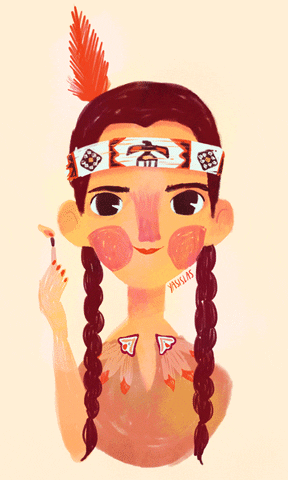🦓✨The Nexialist #0065
How Many Humans? | Zebras x Unicorns | HoPE Canvas | Time for Indigenous Futurism | Reclamation | Indigenous Memory Tool | EcoPoetry
Welcome to my weekly batch of sweet and sour links that entice your taste thought buds, The Nexialist
This week, the gods of content blew its winds filled with sustainability, indigenous thinking and ancestrality towards me and I just went with the flow. I hope you can find at least one piece of content that resonates with you, your work and your life. Enjoy (and keep giving me ❤️ and sharing The Nexialist with those who might like it. It’s always good to get some love from you.
👥How Many Humans?
I think I haven’t shared an infographic from Visual Capitalist in a while. This one made me spend some time looking at it and kept coming back to my mind after I saw it. When you think that the current population of the world is a lot, this goes beyond. The feeling I got was similar to when I see images of the Universe and realise how small I am. Also, to think that 60 million people die every year and 140 million are born, is quite mindblowing.
With this context and timeframe in mind, the demographers estimate that 109 billion people have lived and died over the course of 192,000 years. If we add the number of people alive today, we get 117 billion humans that have ever lived. This means that for every person alive today, there are approximately 14 people who are no longer with us.
“It is these 109 billion people we have to thank for the civilization that we live in. The languages we speak, the food we cook, the music we enjoy, the tools we use – what we know we learned from them.” –Max Roser, OUR WORLD IN DATA
Read: How Many Humans Have Ever Lived? - Nick Routley | Visual Capitalist
🦓Zebras x Unicorns
This is one of those concepts I wish I had seen before (It exists since 2017!). Aniyia Williams, Jennifer Brandel, Mara Zepeda, and Astrid Scholz, created this as a counter-movement to Unicorn Startups (startups valued at more than US$1 Billion) and invites us to rethink the business/startups’ romanticization of them. Of course, it had to be started by women, another proof that the Future is Female.
The title of the manifesto is already a kick on our chins: “Zebras Fix What Unicorns Break: Magical thinking drives the startup economy — but we need a strong dose of reality.”
Startup culture cannot be fixed by #decencypledges, tearful mea culpas, or diversity training. From the start, it has excluded countless capable founders and ignored the important products and services they’re passionate about bringing to the world. We’ve come to realize that many of these founders are actually not interested in gaining entry to a unicorn kingdom. These founders don’t align with the scene, the values, the culture, the business models, and the economic imbalance it perpetuates. When a system is corrupted, why endorse it by joining it? Instead of fighting to change this existing reality, why not design a new one of our own?
The Zebra movement is a founder-driven, grassroots effort, grounded in a different set of ideals. “Zebras Fix What Unicorns Break” invited those who share our values and ambitions to help make another reality possible.
Read: Zebras Fix What Unicorns Break + Zebras: Let’s Get In Formation
🏠HoPE Canvas
Another thing that came my way while looking for ways of thinking Purpose was the HoPE (House of Purpose Expression), by Claudio Dipolitto. The roof of the house is based on the Ikigai, and the base is a variation of the Business Model Canvas, created by Osterwalder and Pigneur. In the middle, how to bridge those two parts. It inspired me to apply it to myself.
The advantages of using a visual model over a textual description are multiple. A diagram or table can (1) capture and synthesize the essential elements of our thoughts and speeches; (2) help participants to create a common language and be on the same page; (3) can represent something that already exists - the AS IS - or that is still being imagined - the TO BE; and (4) the various versions of the visual model makes it easier to see how the model has evolved over time and compare the decisions and choices made at each step.
Read: HoPE Canvas: A Tool to Express our Purpose | Claudio Dipolitto
🌎Time for Indigenous Futurism
The term “Indigenous futurism” has emerged alongside other arts and cultural movements, notably Afrofuturism, that express the desire to reclaim both the past and the future for minoritarian and oppressed peoples that have, until recently, been written out of settler history and its (supposedly) glorious future.
(…)
There is an emerging arts of Indigenous futurism, a new way of storytelling using today’s technologies to unearth the traditional ways that have been erased from colonial history, all the while telling new narratives of the future. Arising at the intersection of digital filmmaking, electronic music, and media arts, Indigenous futurism is not so much about the tools as it is about the storytelling, and the act of reclaiming Indigenous story, arts, being and time itself.
I get chills when I read these things. The piece Time for Indigenous futurism brings other films and music that are part of the movement, but this one was my favorite. It’s always great to see the Queer Gaze, and when you add an indigenous layer on top, I just had to dig for the link online. Congrats, Thirza Jean Cuthand!
“Reclamation” is a documentary-style imagining of a post-dystopic future in Canada after massive climate change, wars, pollution, and the after effects of the large scale colonial project which has now destroyed the land. When Indigenous people are left behind after a massive exodus by primarily privileged White settlers who have moved to Mars, the original inhabitants of this land cope by trying to restore and rehabilitate the beautiful country they feel they belong to. Complicated by the need to look after southern climate refugees, this Post-Dystopic society struggles to reinvent itself as a more healthy community, with opportunities for healing from shared trauma, and using traditional Indigenous scientific knowledge to reclaim Canada environmentally.
Indigenous people demonstrate the jobs they are doing to heal Canada, the Earth, and themselves, like clean water projects, gathering litter, disposing safely of hazardous wastes, planting trees, conducting healing circles and ceremonies, playing together, and having discussions about what it feels like to be left behind on what was seen by White settlers as a dying, disposable, planet. - The Next Documentary Futurism
Read: Time for Indigenous futurism - Pique Newsmagazine
🧠Indigenous Memory Tool
In the Reclamation short film, the indigenous survivors mention memory as an issue when the internet stopped working. One of them says they suddenly had to learn the name of the plants and they realized how lazy we were because everything would be on Google. The 1905 quote from George Santayana is true though, “Those who cannot remember the past are condemned to repeat it.”
50 editions ago, I mentioned the Memory Palace as a memory technique.
A Memory Palace is an imaginary location in your mind where you can store mnemonic images. The most common type of memory palace involves making a journey through a place you know well, like a building or town. Along that journey there are specific locations that you always visit in the same order. The location are called loci, which is Latin for locations.
This week, I came across this article about a superior and more ancestral way to do it, and I can’t wait to try it. If the memory palace is place-based, usually in your childhood home, this technique uses open spaces, with a layer of narrative, image and metaphor.
Group 2 participants were given an overview of the Australian Aboriginal memorization technique by an experienced Australian Aboriginal educator, including a short description of how Elders instruct young people, and the elements of place-based narrative, image, and metaphor.
Read: New study finds ancient Australian Aboriginal memory tool superior to “memory palace” learning among medical students | Monash University
🫀EcoPoetry
In the age of eco-anxiety, these words feel like a cuddle, or at least bring different feelings towards climate change, even if it is mourning or sadness. Just one of those beautiful finds that caught my eyes and my heart.
Words in poems are not like regular words. Strung together in rhythms and sounds, line by line, they come to life, conjuring a shared experience and bringing it close. We don’t just read these words. We feel them. That is their power. And it is a power increasingly being harnessed in a genre known as eco-poetry.
Beyond honouring nature for the gift that it is, the three eco-poems below call on us to take notice of what’s at stake. Written by indigenous voices, they amplify the reality of those most affected. In sharing these words, their message resonates across oceans and continents, landing where it has the most impact – our heart.
Read: Poetry for the planet: Words that move us | 5media
❤️If anything made your brain tingle, click like and don't hesitate to share it with the world. It helps The Nexialist to reach more curious minds. See you next week!🦦
🫀If you enjoyed this newsletter, please share it with your friends. If someone amazing sent it to you, tell them you love them, and you can subscribe at thenexialist.substack.com. If you want to know what a Nexialist is, click here.
🤙Call me…
If you like what you see here and your project, brand or business needs some ideas or inspiration from outside your bubble, maybe you need a Nexialist to help you out 🙋🏻♂️ I can participate in brainstorms and workshops, guide inspiration sessions, or provide you with creative research. You can always send me an e-mail to figure something out together.










